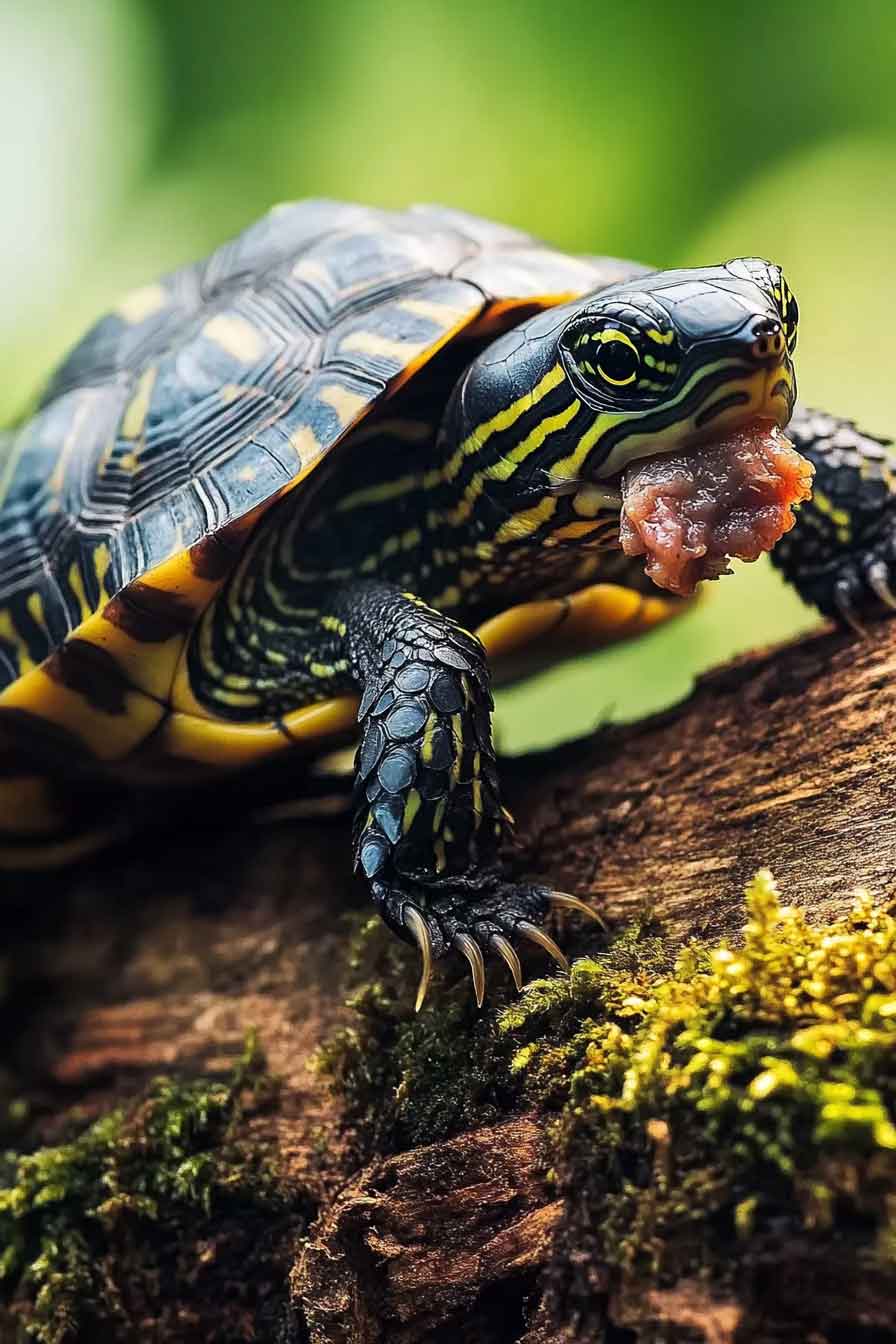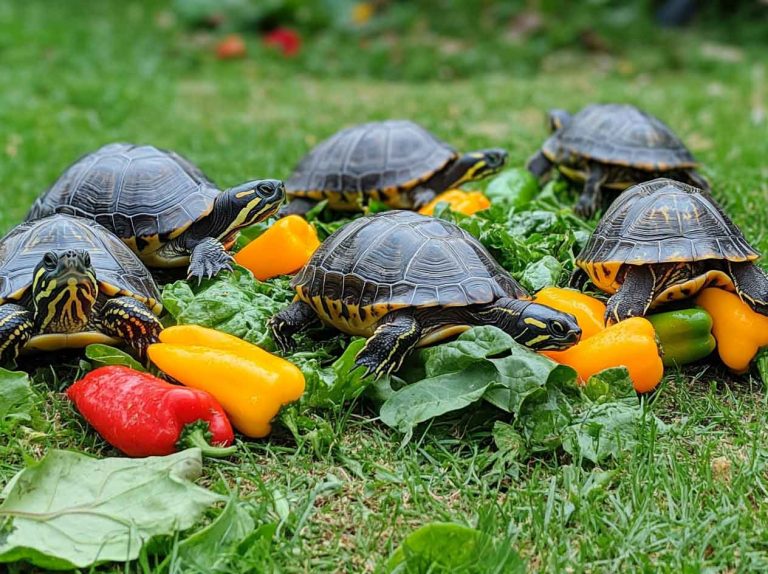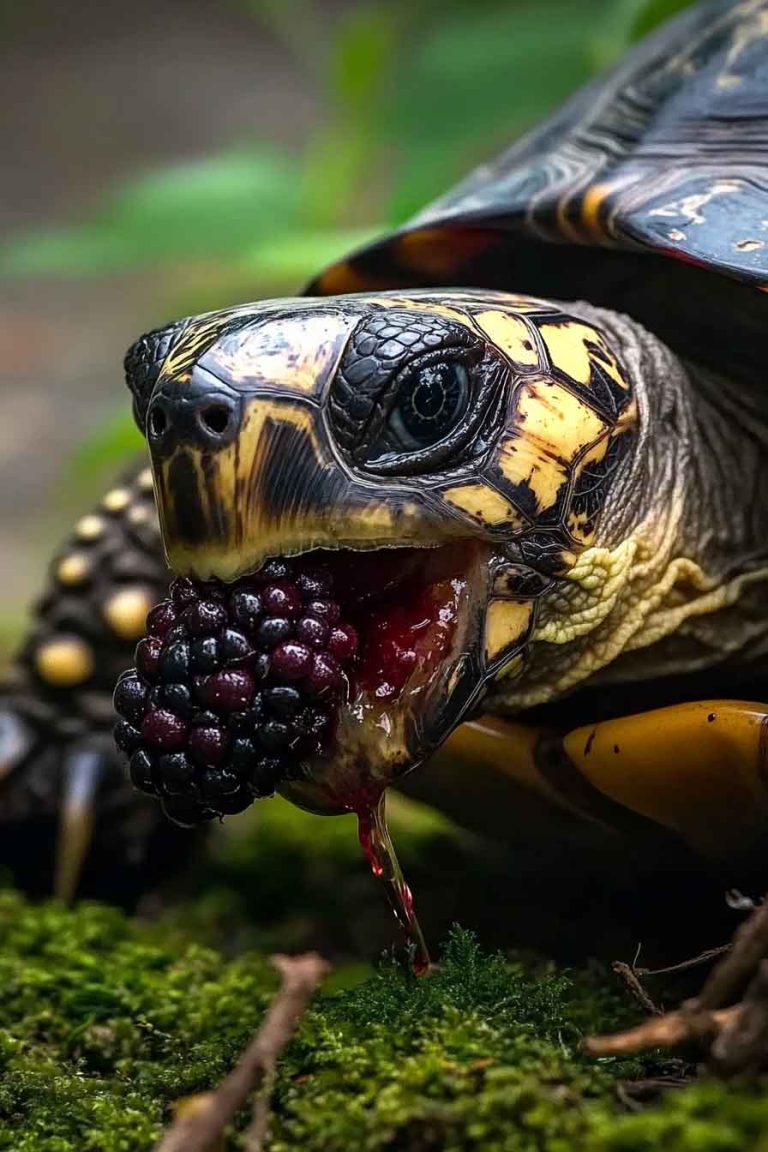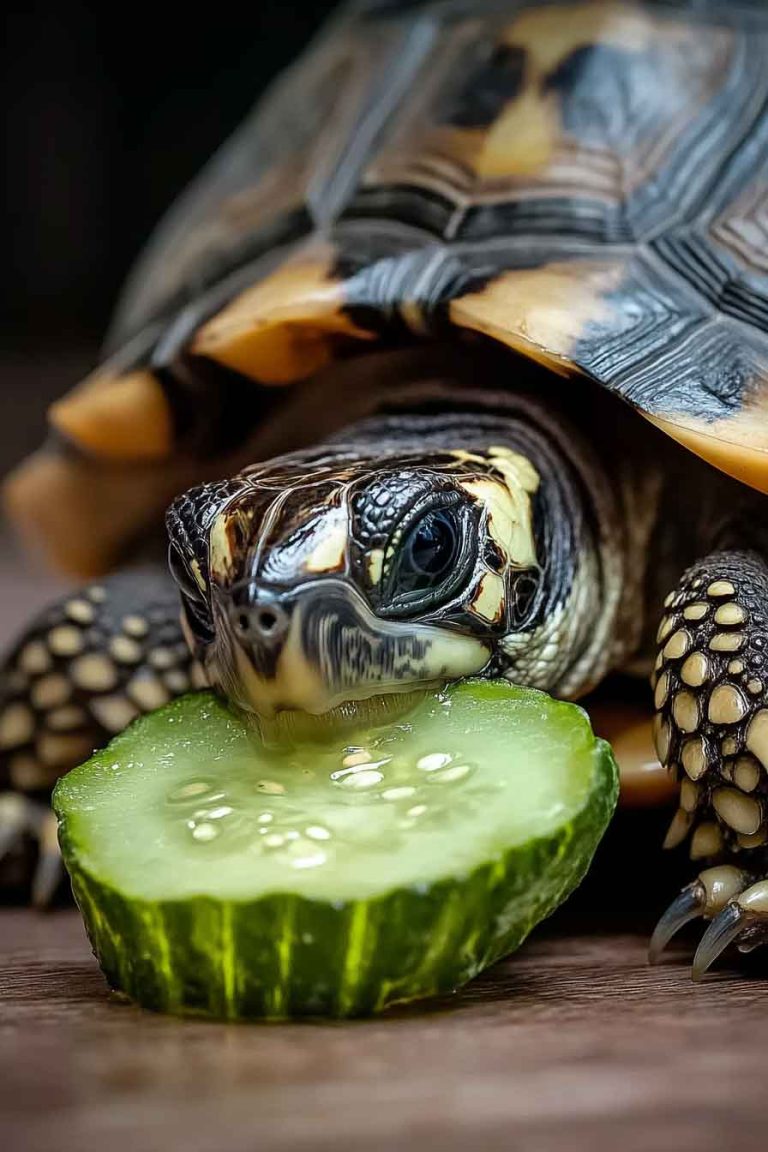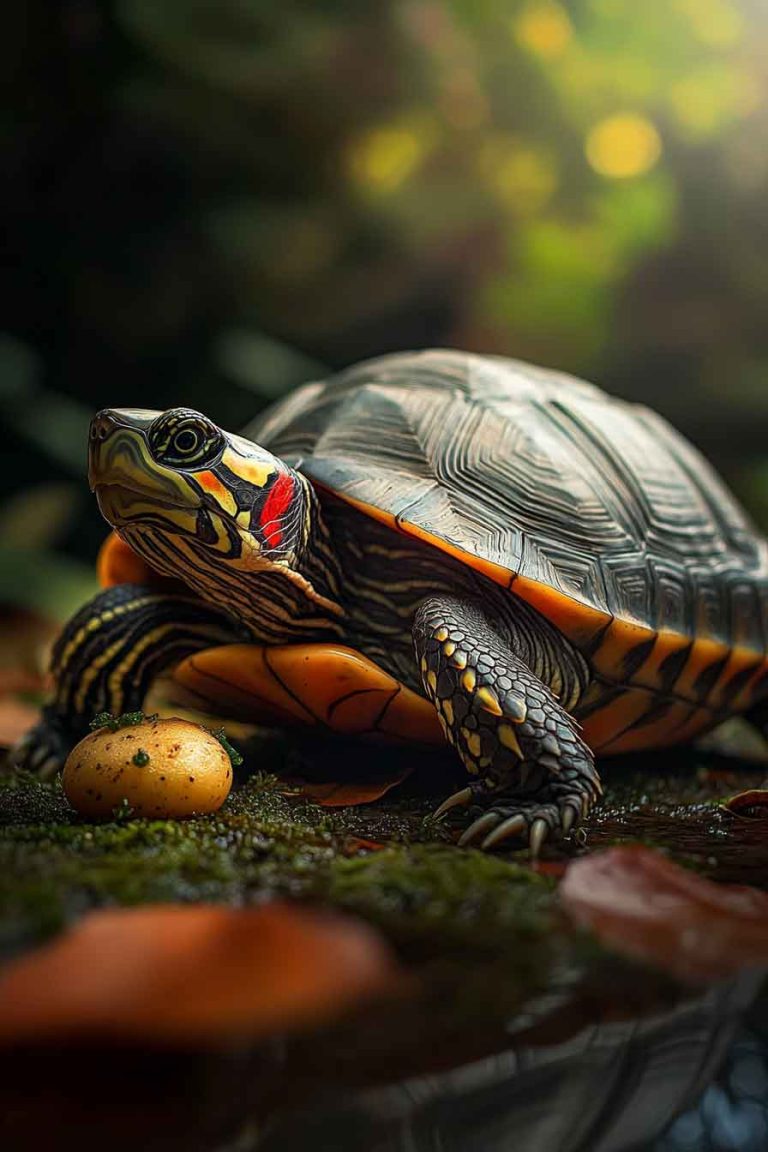Can Turtles Eat Meat? Safe Feeding Tips for Baby Turtles
If you’re a turtle owner like me, you’ve probably wondered about expanding your pet’s diet beyond the usual vegetables and commercial turtle food. One question that comes up frequently in turtle care forums is whether our shelled friends can enjoy meat. It’s a natural curiosity, especially when you see your turtle eagerly approaching anything that…
If you’re a turtle owner like me, you’ve probably wondered about expanding your pet’s diet beyond the usual vegetables and commercial turtle food. One question that comes up frequently in turtle care forums is whether our shelled friends can enjoy meat. It’s a natural curiosity, especially when you see your turtle eagerly approaching anything that moves in their tank.
So, can turtles eat meat? The answer is yes – many turtles can and do eat meat! In fact, most turtle species are omnivores, meaning they naturally consume both plant and animal matter in the wild. However, the type, amount, and preparation of meat matters significantly for your turtle’s health and wellbeing.
In this article, I’m going to share everything you need to know about feeding meat to your turtle. I’ll cover which types of meat are safe, how much to offer, and special considerations for baby turtles. Keep reading if you want to provide the best possible diet for your turtle companion.
Can You Feed Meat To Your Pet Turtle?
The answer depends entirely on your turtle species. Most aquatic and semi-aquatic turtles are omnivores who naturally hunt and eat meat in their wild habitat. Box turtles, red-eared sliders, painted turtles, and snapping turtles all consume meat as part of their natural diet.
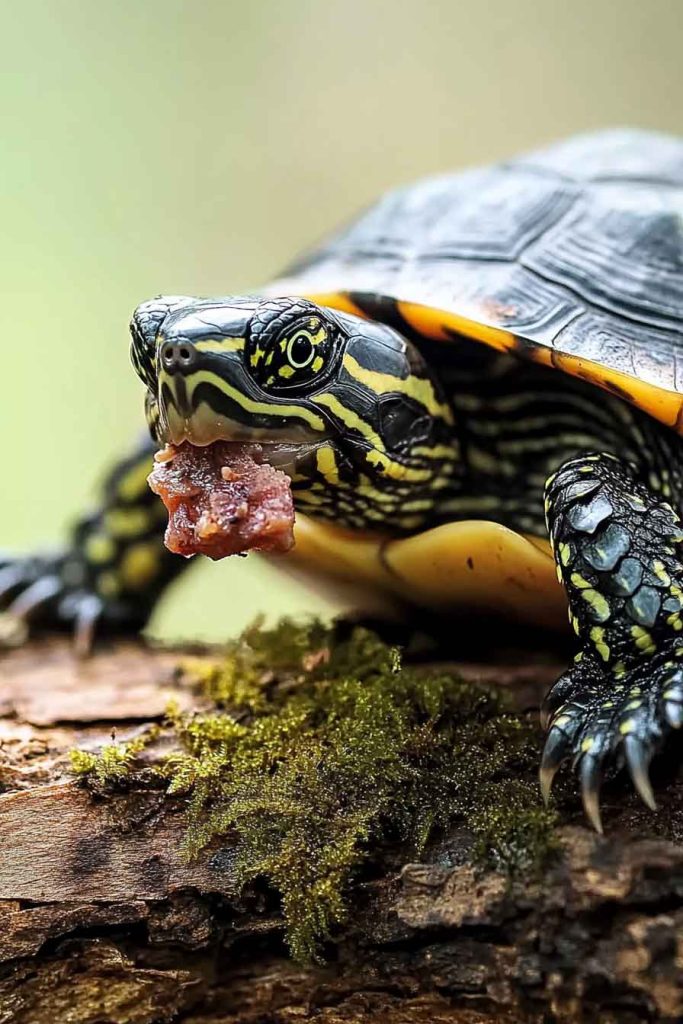
However, not all turtles are created equal when it comes to dietary needs. Let me break down what you need to consider:
Omnivorous turtles (like red-eared sliders, box turtles, painted turtles) can safely eat appropriate meats as 25-50% of their diet, depending on their age and species.
Herbivorous turtles (like Russian tortoises, Hermann’s tortoises) should have meat only as an occasional treat or avoided entirely, as their digestive systems aren’t designed to process large amounts of animal protein.
When I first started keeping turtles, I made the mistake of thinking all turtles had the same dietary requirements. I quickly learned that understanding your specific turtle species is crucial for their long-term health.
Let’s look at the nutritional content of common meats that are safe for turtles (per 100 grams):
Cooked Chicken (skinless):
- Protein: 31 g
- Fat: 3.6 g
- Calcium: 15 mg
- Phosphorus: 228 mg
- Iron: 1.3 mg
- Vitamin B12: 0.3 mcg
Cooked Fish (tilapia):
- Protein: 26 g
- Fat: 2.7 g
- Calcium: 14 mg
- Phosphorus: 204 mg
- Omega-3 fatty acids: 0.2 g
Earthworms:
- Protein: 10.5 g
- Fat: 1.5 g
- Calcium: 445 mg
- Phosphorus: 226 mg
- Iron: 3.8 mg
As you can see, different meat sources provide varying nutritional profiles. The high protein content supports growth and shell development, while the calcium and phosphorus ratios need careful consideration.
Do Turtles Like Meat?
In my experience, most omnivorous turtles absolutely love meat! I’ve watched my red-eared slider get incredibly excited when I approach with a piece of cooked chicken or fish. Their hunting instincts kick in, and they become much more active and engaged.
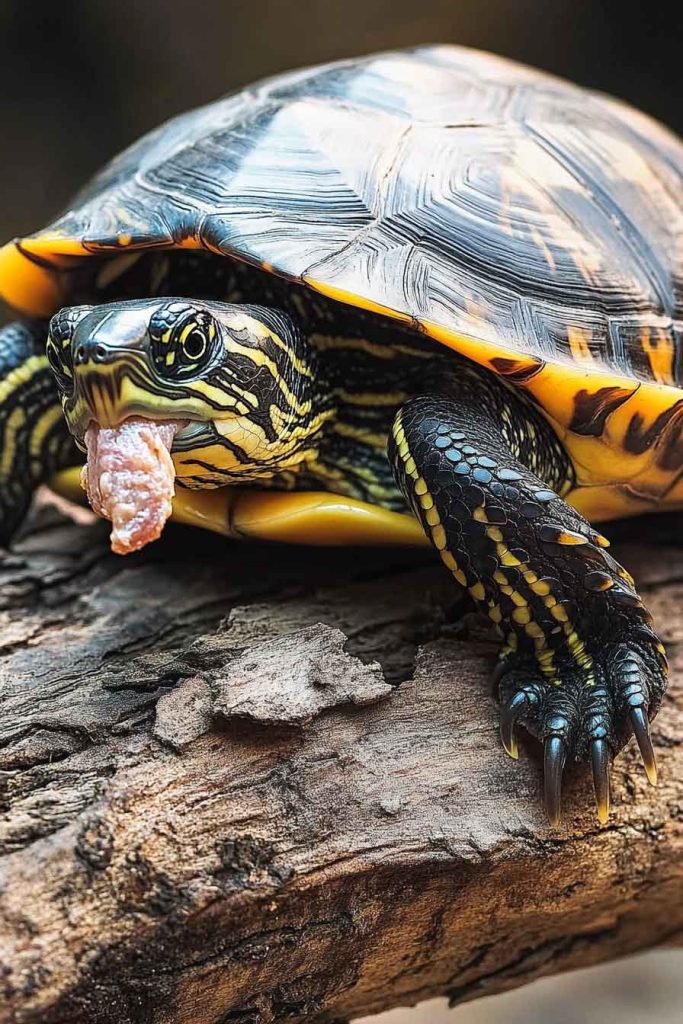
Wild turtles actively hunt for:
- Small fish and tadpoles
- Insects and larvae
- Worms and snails
- Crustaceans
- Small amphibians
This natural behavior tells us that meat isn’t just acceptable for many turtle species – it’s actually essential for their psychological wellbeing and natural behavior expression.
Health Benefits of Meat for Turtles
When fed appropriately, meat provides several crucial health benefits for omnivorous turtles:
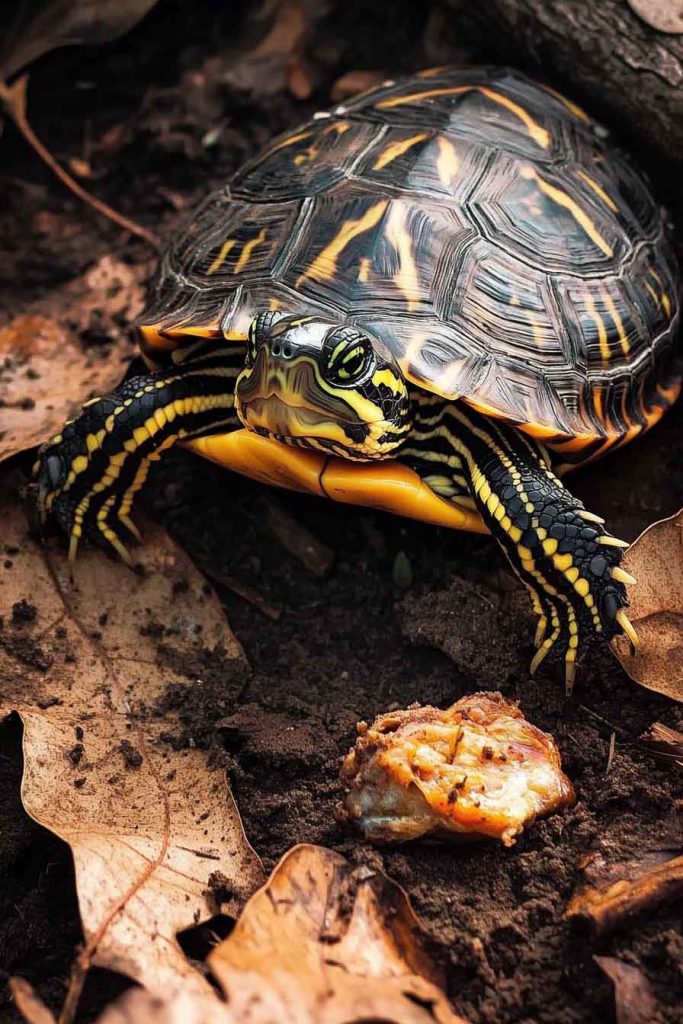
High-Quality Protein
Meat provides complete proteins containing all essential amino acids. This is particularly important for:
- Shell growth and repair
- Muscle development
- Immune system function
- Enzyme production
Essential Vitamins
Meat sources provide vital vitamins that are difficult to obtain from plant matter alone:
- Vitamin B12: Critical for nervous system function
- Vitamin D3: Helps with calcium absorption
- Iron: Prevents anemia and supports oxygen transport
Natural Hunting Behavior
Offering appropriate meat allows turtles to express natural hunting and foraging behaviors, which is important for their mental stimulation and overall wellbeing.
Balanced Nutrition
For omnivorous species, meat helps create a balanced diet that more closely mimics what they would eat in nature.
What Types of Meat Are Safe for Turtles?
Not all meats are created equal when it comes to turtle nutrition. Here are the safest options I recommend:
Excellent Choices:
- Cooked chicken or turkey (skinless, boneless)
- Cooked fish (tilapia, salmon, trout)
- Earthworms (pesticide-free)
- Crickets (gut-loaded)
- Mealworms (in moderation)
- Bloodworms (frozen or freeze-dried)
Good Occasional Treats:
- Cooked shrimp (remove shell)
- Cooked crab meat
- Small feeder fish (healthy specimens only)
Foods to Avoid:
- Raw meat (risk of bacterial contamination)
- Processed meats (hot dogs, lunch meat, bacon)
- Seasoned or spiced meats
- Fatty cuts of meat
- Wild-caught prey (may carry parasites)
How Much Meat Should Turtles Eat?
The amount of meat in your turtle’s diet depends on several factors:
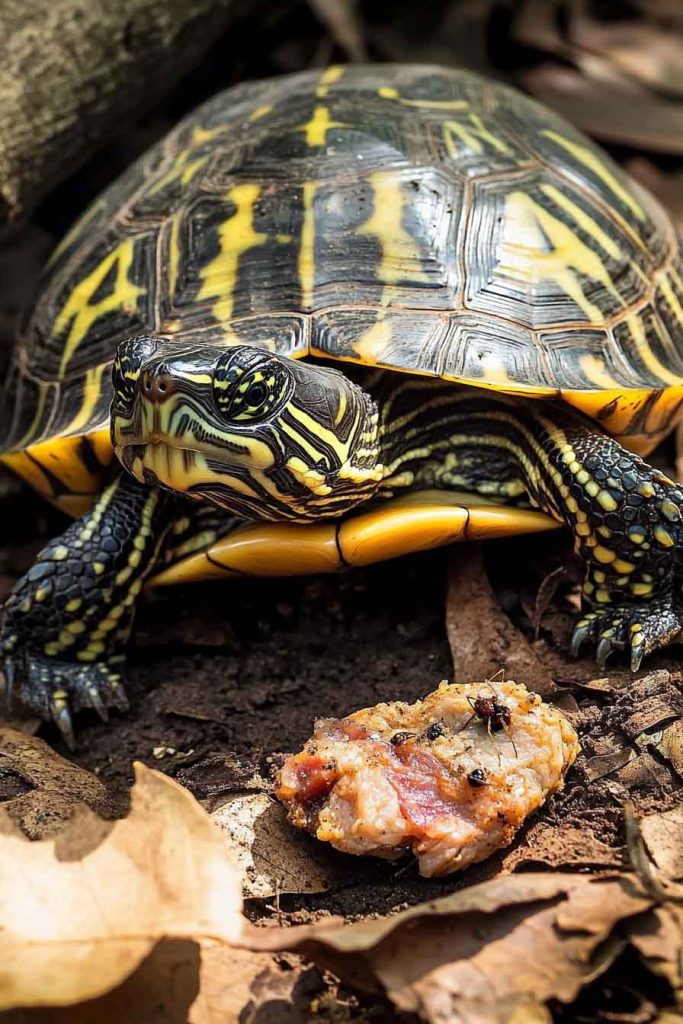
By Age:
- Juveniles (under 2 years): 50% meat, 50% vegetables
- Adults: 25% meat, 75% vegetables and plants
By Species:
- Highly omnivorous (snapping turtles): Up to 60% meat
- Moderately omnivorous (box turtles): 25-40% meat
- Mostly herbivorous (some box turtle subspecies): 10-20% meat
Feeding Schedule:
I recommend offering meat 2-3 times per week for adult turtles, and daily for growing juveniles. Always remove uneaten meat after 15-30 minutes to prevent water quality issues.
Can You Feed Meat to Baby Turtles?
Yes, and in fact, baby turtles typically need MORE meat than adults! This surprised me when I first started raising turtle hatchlings, but it makes perfect sense when you think about their rapid growth requirements.
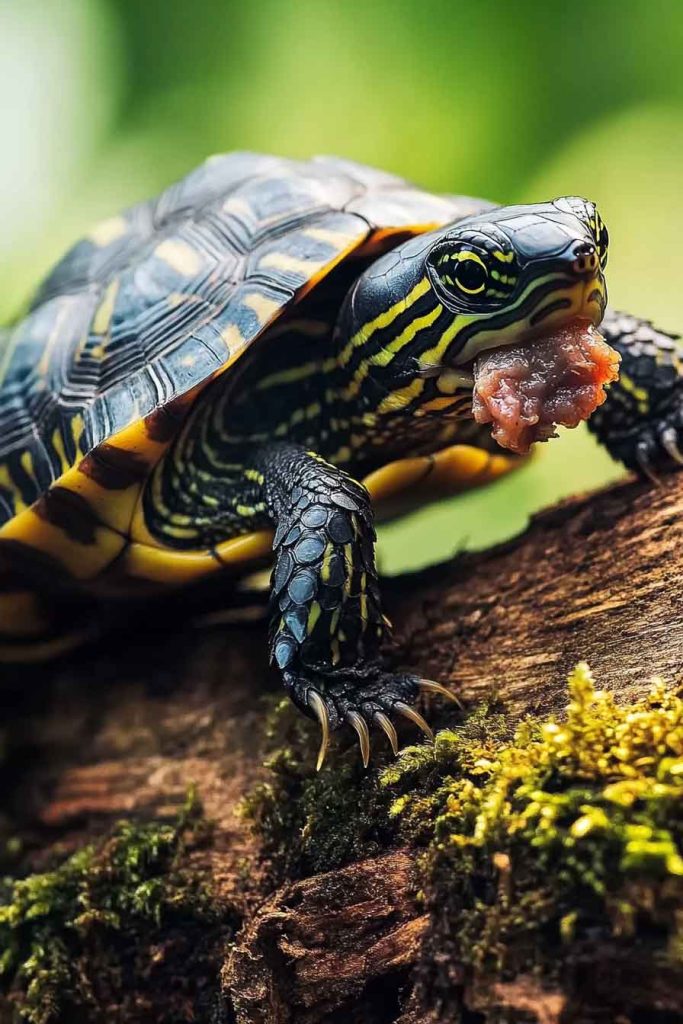
Why Baby Turtles Need More Meat:
Rapid Growth: Hatchlings and juveniles are growing their shells, bones, and muscles at an incredible rate. The high-quality protein in meat provides the building blocks they need.
Energy Requirements: Baby turtles are incredibly active and have higher metabolic rates than adults.
Natural Diet: In the wild, young turtles tend to be more carnivorous, gradually becoming more herbivorous as they mature.
Best Meat Options for Baby Turtles:
- Bloodworms (easy to digest)
- Small crickets (gut-loaded)
- Tiny pieces of cooked fish
- Commercial turtle pellets (which contain meat proteins)
Feeding Guidelines for Babies:
- Feed daily
- Offer variety
- Keep pieces very small (smaller than the space between their eyes)
- Monitor for proper growth and shell development
Preparing Meat Safely for Your Turtle
Proper preparation is crucial for your turtle’s safety. Here’s my step-by-step process:
Cooking Guidelines:
- Always cook meat thoroughly to eliminate harmful bacteria
- Never add seasonings, oils, or butter
- Remove all bones (choking hazard)
- Cut into appropriate sizes (no larger than the space between your turtle’s eyes)
- Cool to room temperature before offering
Storage Tips:
- Prepare portions in advance and freeze
- Thaw only what you need for each feeding
- Never refreeze thawed meat
- Use within 24 hours of thawing
Potential Health Risks of Feeding Meat
While meat can be beneficial, there are some risks to be aware of:
Overfeeding Protein
Too much meat can lead to:
- Kidney problems from excessive protein
- Shell pyramiding in some species
- Aggressive behavior
- Obesity
Poor Quality Meat
Feeding inappropriate meat can cause:
- Bacterial infections from raw or spoiled meat
- Nutritional imbalances from processed meats
- Digestive upset from fatty or seasoned meats
Calcium/Phosphorus Imbalance
Most meats are high in phosphorus but low in calcium. This can lead to:
- Metabolic Bone Disease
- Soft shell syndrome
- Bone deformities
To prevent this, I always dust meat with calcium powder or ensure my turtle gets plenty of calcium-rich vegetables.
Species-Specific Guidelines
Different turtle species have different meat requirements:
Red-Eared Sliders
- Juveniles: 50% meat
- Adults: 25% meat
- Best options: Fish, earthworms, crickets
Box Turtles
- Juveniles: 40% meat
- Adults: 20% meat
- Best options: Earthworms, snails, crickets
Painted Turtles
- Juveniles: 50% meat
- Adults: 25% meat
- Best options: Fish, aquatic insects, worms
Snapping Turtles
- All ages: 40-60% meat
- Best options: Fish, crayfish, larger prey items
Video of Turtles Eating Meat
Watching turtles hunt and eat meat is fascinating and shows their natural predatory instincts. I’ve observed my own turtles become incredibly focused and excited when meat is introduced to their environment.
[Video placeholder: Turtle hunting behavior and meat consumption]
The way they stalk, capture, and consume their prey demonstrates why meat is such an important part of their natural diet.
Frequently Asked Questions (FAQs)
Can Aquatic Turtles Eat Raw Fish?
While wild aquatic turtles do eat raw fish, I don’t recommend feeding raw fish to pet turtles due to the risk of bacterial contamination and parasites. Cooked fish is much safer and just as nutritious.
Is It Safe to Feed My Turtle Insects from My Garden?
I strongly advise against feeding wild-caught insects to your turtle. They may have been exposed to pesticides, parasites, or diseases. Commercially raised insects are much safer.
How Often Should I Feed Meat to My Adult Turtle?
For most adult omnivorous turtles, I recommend offering meat 2-3 times per week. The rest of their diet should consist of vegetables, leafy greens, and commercial turtle pellets.
Can Herbivorous Turtles Ever Eat Meat?
Strictly herbivorous species like Russian tortoises should have meat only as a very rare treat, if at all. Their digestive systems aren’t designed to process large amounts of animal protein.
What Should I Do If My Turtle Won’t Eat Meat?
Some individual turtles may prefer plant matter, which is fine if they’re getting adequate nutrition from other sources. Don’t force meat if your turtle consistently refuses it, but do ensure they’re getting enough protein from other sources.
Can I Feed My Turtle Canned Meat or Fish?
I don’t recommend canned meat or fish due to high sodium content and preservatives. Fresh, cooked meat is always the best option.
Conclusion
Meat can be an excellent and necessary part of many turtles’ diets when offered appropriately. The key is understanding your specific turtle species, offering the right types of meat in proper proportions, and always prioritizing food safety.
Remember that baby turtles generally need more meat than adults, and the quality of meat matters just as much as the quantity. Always cook meat thoroughly, avoid seasoning, and maintain proper calcium/phosphorus ratios in the overall diet.
If you’re ever unsure about your turtle’s dietary needs, don’t hesitate to consult with a veterinarian who specializes in reptiles. They can provide species-specific guidance and help you create the perfect diet plan for your shelled companion.
I hope this comprehensive guide helps you make informed decisions about including meat in your turtle’s diet. Your turtle’s health and happiness depend on getting their nutrition right, and with proper knowledge, you can provide them with a diet that supports their natural behaviors and long-term wellbeing.

